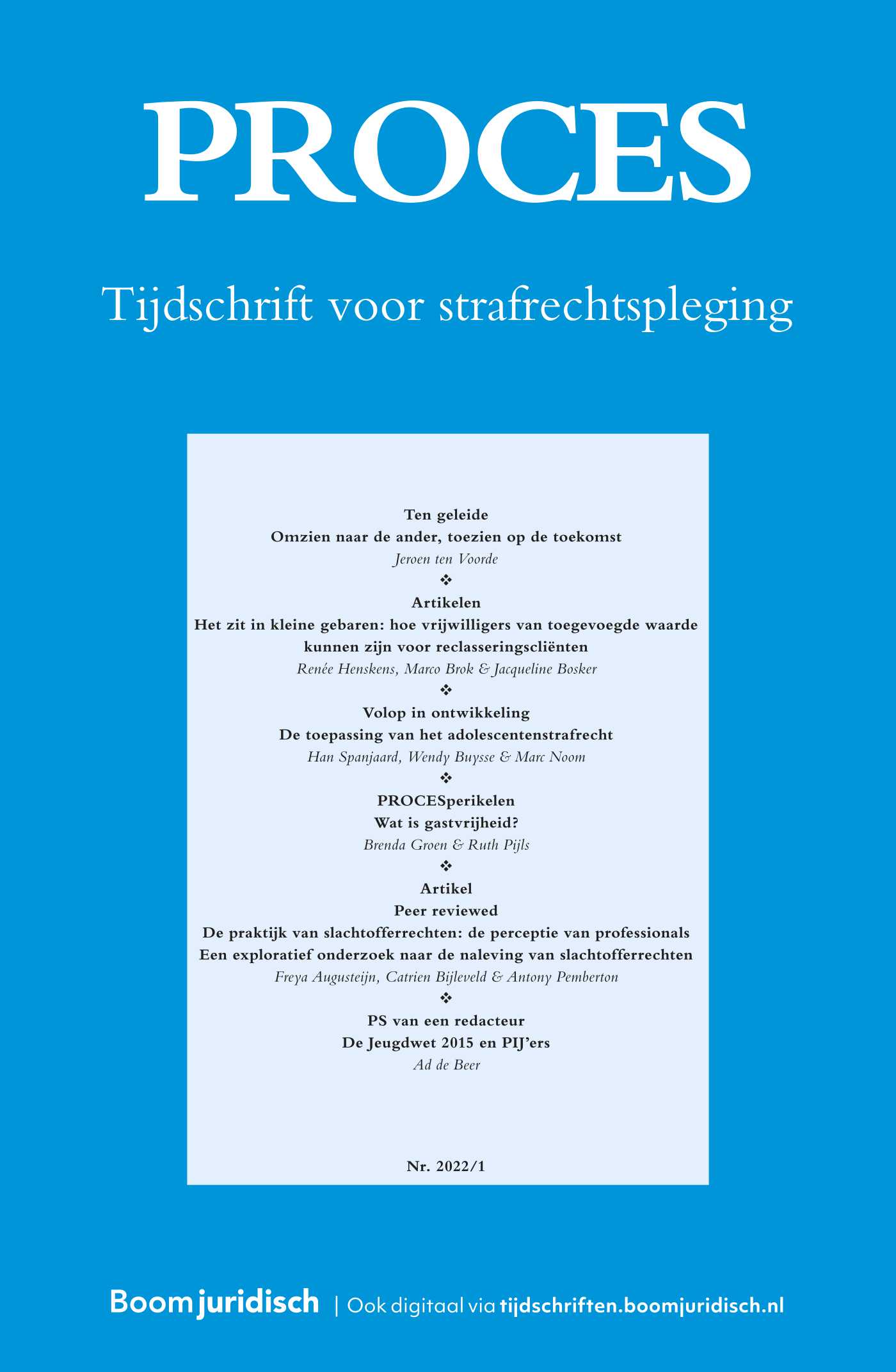|
The purpose of this contribution is to uncover which values are related to and may come under tension by predictive identification at the individual level of citizens and police officers. To achieve this goal, a method derived from computer ethics called ‘disclosive computer ethics’ is used. Disclosive computer ethics consists of three different levels of analysis. This paper, after explaining exactly what predictive identification is and why it is not transparent, will go through these three levels of analysis. The first level of analysis centers on what values may be promoted or harmed by predictive identification. The second level of analysis revolves around whether predictive identification causes the identified values to be interpreted differently. The third level of analysis is about how predictive identification can be better handled from the point of view of the identified values. |


PROCES
Meer op het gebied van Criminologie en veiligheid
Over dit tijdschriftMeld u zich hier aan voor de attendering op dit tijdschrift zodat u direct een mail ontvangt als er een nieuw digitaal nummer is verschenen en u de artikelen online kunt lezen.
| Ten geleide |
Risicogestuurd en mensgericht, kan het samen? |
| Auteurs | Jacqueline Bosker |
| Auteursinformatie |
| Peer reviewed |
|
| Trefwoorden | predictive identification, computerethiek, transparantie, panopticon |
| Auteurs | Litska Strikwerda |
| SamenvattingAuteursinformatie |
| Artikel |
Knelpunten bij de opvang van ongedocumenteerde slachtoffers van geweld in afhankelijkheidsrelaties |
| Trefwoorden | geweld in afhankelijkheidsrelaties, ongedocumenteerden, opvang |
| Auteurs | Janine Janssen en Essa Reijmers |
| SamenvattingAuteursinformatie |
|
Based on two group-interviews, we explored bottlenecks in the care of undocumented victims of violence in relations of dependency (f.e. domestic and honour-related violence). Professionals working in shelter must deal with complex legal issues. They do not have a legal background, but they notice that their work is influenced by immigration, family and criminal law. Because victims do not have a residence status, they are not or hardly eligible for all kinds of facilities from public funds, such as benefits. As a result, they cannot provide for their livelihood. Dutch policy does an appeal to one’s own network and self-reliance. However, this is not realistic in the case of undocumented migrants. |
| PROCESperikelen |
Terug naar de fabrieksinstellingen |
| Auteurs | Bennie Beuvink |
| Auteursinformatie |
| Artikel |
De verdachte transacties van drugshandelaren: kansberekeningen |
| Trefwoorden | witwassen, drugshandel, meldketen, effectiviteit |
| Auteurs | Melvin Soudijn |
| SamenvattingAuteursinformatie |
|
Do drug traffickers have suspicious transactions? In answer to this question, 13,159 individuals registered with the police as drug trafficking suspects were matched with the Financial Intelligence Unit-Netherlands. It turns out that 21.9% of drug suspects is registered with one or more suspicious transactions. Just like the legal world, there is ‘wealth’ inequality. The top 10% is responsible for 84% (395 million euros) of the total amount in suspicious transactions. The results show that measuring the effectiveness of the reporting chain needs a nuanced approach which gives weight to an individual’s number of transactions, amount involved and time period. |
| PS van een redacteur |
Achter de tralies of achter de geraniums?Over een pensioengerechtigde leeftijd in het strafrecht |
| Auteurs | Joke Harte |
| Auteursinformatie |
| Call for papers |
Call for papers |

